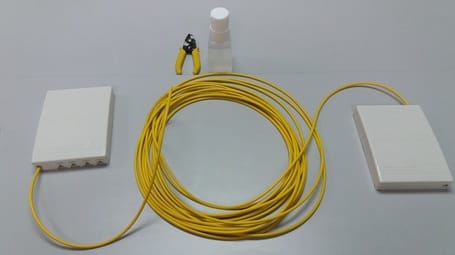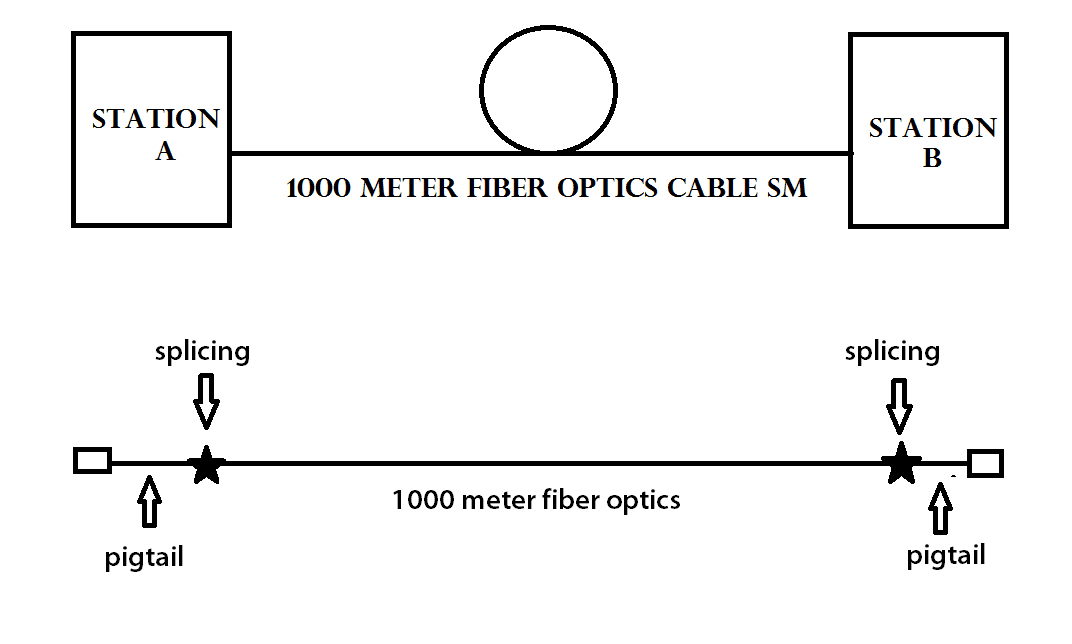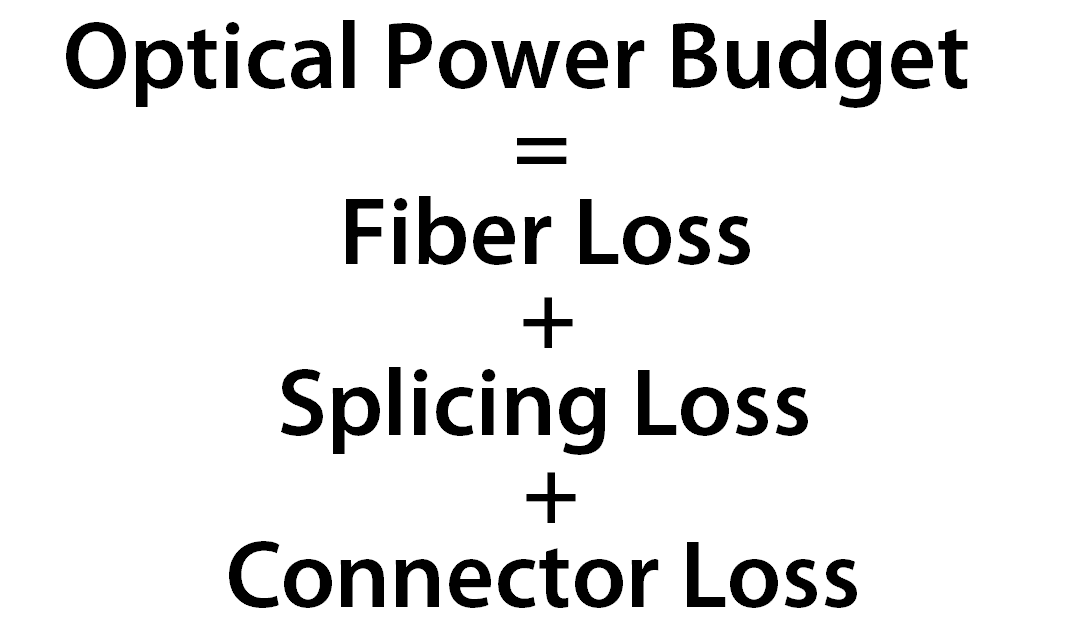Calculation of Optical Power BudgetWhat is Optical Power Budget ? The optical power budget identifies how much attenuation or loss is allowed across a fiber span while still maintaining sufficient output power for the receiver.
How To Calculate Optical Power Budget ?
Fiber Loss = Length of fiber (km) x Attenuation (dB/km) Length of fiber (km) - to get this value by using OTDR Attenuation (dB/km) - SM 1310nm - 0.3dB/km & SM 1550nm - 0.2dB/km MM 850nm - 3dB/km & MM 1300nm - 1 dB/km Splicing Loss = No. of splicing x Max splicing loss (dB) No. of splicing - total number of splicings done from Station A to Station B Max splicing loss - as per TIA/EIA recommendation 0.2dB for each splicing Connector Loss = No. of connector x Max connector loss (dB) No. of connectors - total number of connectors from Station A to Station B Max connector loss - as per TIA/EIA recommendation 0.75 dB for connectors (but we take maximum connector loss at 0.5dB) Optical Power Budget Calculation ExampleUsing above Figure 1 fiber optics schematic diagram followings can be deduced : a. Total length of fiber is 1km b. 2 nos of splicings c. 2 nos of connectors d. SM operating wavelength of 1310 nm - 0.3dB/km, 1550nm - 0.2dB/km Operating Wavelength at 1310nm Maximum Allowable Loss = Fiber Loss + Splicing Loss + Connector Loss = (1 km x 0.3 dB/km) + ( 2 x 0.2dB) + ( 2 x 0.5dB) = 1.7dB Operating Wavelength at 1550nm Maximum Allowable Loss = Fiber Loss + Splicing Loss + Connector Loss = (1 km x 0.2 dB/km) + ( 2 x 0.2dB) + ( 2 x 0.5dB) = 1.6dB
On next articles we will emphasized on
3 Comments
7/8/2018 03:04:35 pm
Optical fiber is found to be use impotant
Reply
1/9/2021 08:02:38 am
First time here at your blog and wanted to say i enjoyed reading this
Reply
Leave a Reply. |
AuthorI have been in the field of fiber optics since early 1990s. I gained fiber optics skills and knowledge via my working experience as end-user, main contractor and sub-contractor and finally as an optical fiber enterpreneur. Archives
January 2017
Categories
All
|




 RSS Feed
RSS Feed